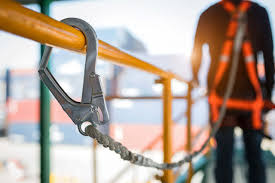


 349,500 Offered Certificates
349,500 Offered Certificates
 24/7 Online Training
24/7 Online Training
 Money Back Guarantee
Money Back Guarantee
 Fully Accredited Courses
Fully Accredited Courses

Created at: 22-02-2025 13:55
Safety in working at heights is a critical concern across various industries, including construction, maintenance, and logistics. The evolution of safety equipment and training practices has been pivotal in reducing the risks associated with working at elevated levels. As companies strive to comply with safety regulations and ensure the well-being of their employees, recent innovations in working at heights safety equipment have emerged, enhancing safety protocols.
The backbone of working at heights safety is the harness. Recent advancements in harness technology focus on comfort, efficiency, and safety, ensuring that workers are adequately protected without hindering their mobility.
These improvements lead to higher compliance rates with safety standards and provide peace of mind, knowing that workers are well protected.
Self-retracting lifelines (SRLs) have revolutionized fall protection systems. They offer not only reliability but also ease-of-use, making them an integral part of working at heights safety protocols.
By incorporating self-retracting lifelines into their safety protocols, businesses can significantly reduce the risk of falls and improve overall safety compliance.
Training is pivotal in maintaining safety standards in working at heights. The introduction of virtual reality (VR) training simulations represents a major breakthrough in safety education.
This method stands out as a superior alternative to traditional training approaches, instilling safety skills and knowledge that greatly benefit workers in their roles.
In addition to advanced harnesses and lifelines, smart technology is rapidly infiltrating the safety equipment market. Wearable technology is becoming more commonplace, providing real-time data and alerts that allow for immediate response to potential hazards.
The adoption of these innovations in working at heights safety equipment and training technologies is essential for improving safety standards and compliance in workplaces. Companies that invest in cutting-edge safety gear and training methods not only protect their employees but also minimize liability and potential costs associated with workplace accidents.
Ready to elevate your workplace safety standards? Consider enrolling your team in a Certified Working at Heights Training program today. For more information on our Working at Heights courses online, or to schedule training sessions specifically designed for your workforce in Dublin, Cork, or Galway, contact us at [email protected].